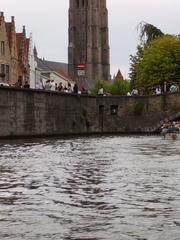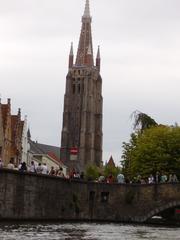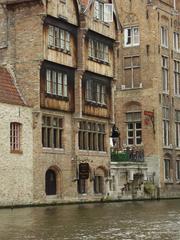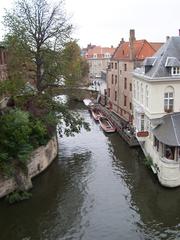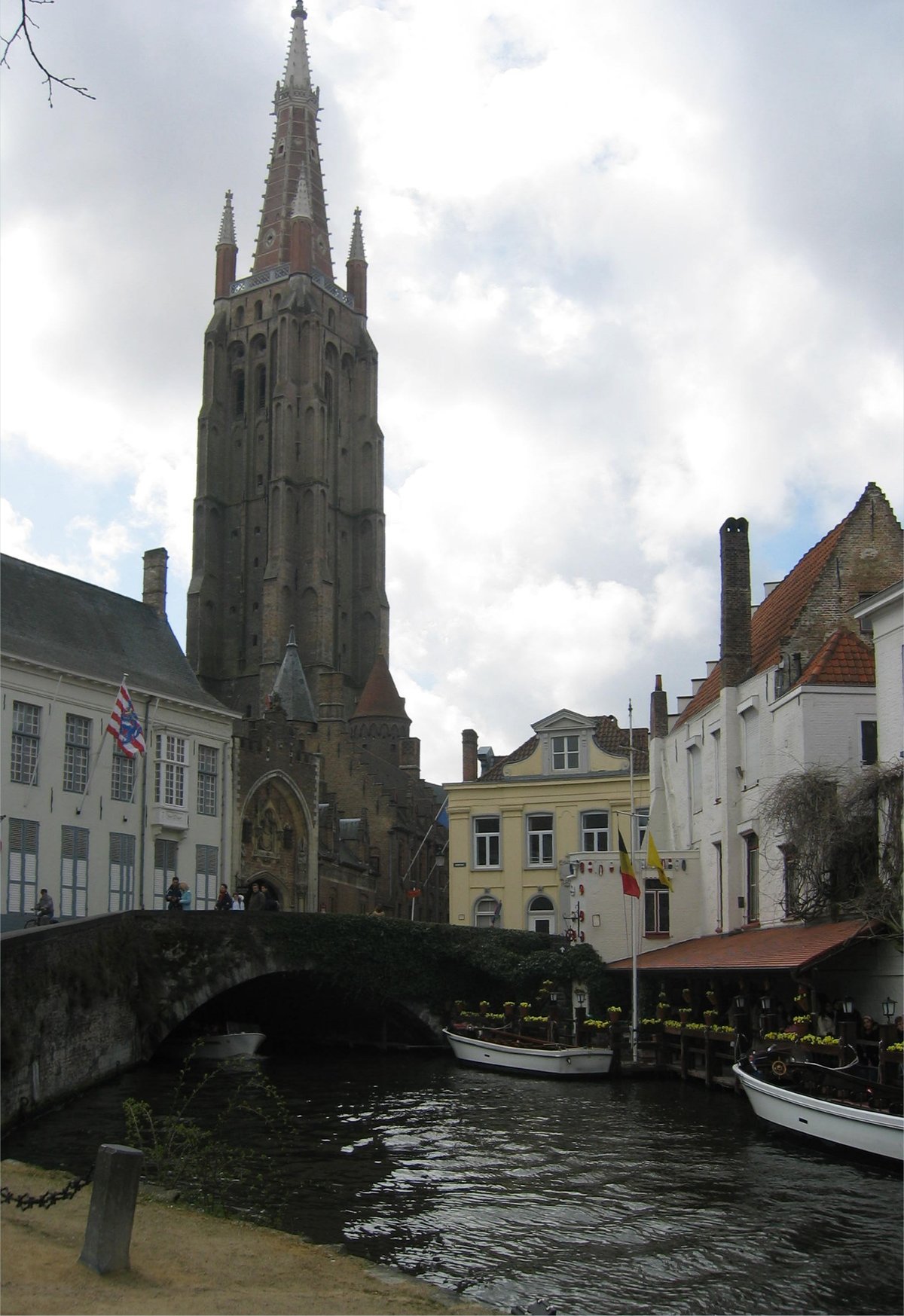
Dijver Bruges: Visiting Hours, Tickets, and Historical Sites Guide
Date: 14/06/2025
Introduction
Dijver, nestled in the heart of Bruges, Belgium, is a captivating testament to the city’s medieval heritage and cultural vibrancy. Once a key artery in Bruges’ rise as a European trading powerhouse, Dijver now blends centuries of history with modern-day charm. The canal’s banks are lined with stately merchant houses, guildhalls, and world-class museums, creating a living museum of art, architecture, and local tradition. Whether you’re drawn by the serene canal views, the masterpieces of Flemish art, or the lively markets and events, this guide covers everything you need to plan an unforgettable visit—including hours, ticketing, accessibility, and nearby attractions (museumsandmiles.com; travelonatimebudget.co.uk; Visit Bruges).
Dijver’s Historical Significance
Medieval Origins
Dijver’s history stretches back to the early Middle Ages, when Bruges’ canal network began shaping the city’s commercial destiny. By the 12th and 13th centuries, the Dijver Canal played a pivotal role in connecting Bruges to the North Sea and the Hanseatic League, facilitating the transport of goods and helping Bruges earn its reputation as the “Venice of the North” (museumsandmiles.com). The area flourished, with merchant houses and guildhalls springing up along the water.
Bruges’ Golden Age
The 15th century marked the zenith of Bruges’ prosperity. Dijver became a focal point for the vibrant trade in textiles, spices, and luxury goods, with its proximity to major market squares and trading houses cementing its economic importance (travelonatimebudget.co.uk). During this time, the area also attracted artists, bankers, and thinkers—helping foster the Flemish Primitive art movement, with artists such as Jan van Eyck working and living nearby.
Preservation and Revival
A decline in trade in the late 15th and 16th centuries led to economic stagnation, inadvertently preserving Dijver’s medieval character. The city’s revival as a tourist destination began in the 19th century, and today, Dijver is celebrated for its picturesque beauty and historical authenticity (brugesbelgium.ca).
Key Sites and Attractions Along Dijver
Groeningemuseum
A highlight for art lovers, the Groeningemuseum houses an outstanding collection of Flemish Primitive paintings, including works by Jan van Eyck and Hans Memling. The museum is located directly on the Dijver and is open Tuesday to Sunday, 9:30 AM–5:00 PM. Tickets are typically around €14, with discounts for seniors and youth (Musea Brugge; Holidify).
Gruuthuse Museum
Located in a 15th-century mansion just steps from the canal, the Gruuthuse Museum showcases Bruges’ aristocratic heritage through medieval artifacts, tapestries, and decorative arts. It shares similar hours and ticketing as the Groeningemuseum (Musea Brugge).
Church of Our Lady (Onze-Lieve-Vrouwekerk)
Famed for its 115.5-meter brick tower—one of the tallest in the world—this church is home to Michelangelo’s Madonna and Child and the tombs of Burgundian dukes. Entry is free, though donations are appreciated.
Boniface Bridge (Bonifaciusbrug)
Located near the Church of Our Lady, this picturesque stone bridge is a favorite spot for photographers, offering classic views of Dijver, historic facades, and tranquil canal waters (Evendo).
Visiting Hours and Ticket Information
Dijver Canal
- Public Access: The canal area is a public space, open 24/7 and free to visit.
- Accessibility: Mostly flat and walkable, but cobblestones may be uneven. Wheelchair access is available at most major museums.
Canal Boat Tours
- Operating Hours: Daily, 10:00–18:00 (March–mid-November; winter hours may vary).
- Tickets: Sold at the jetty (around €15 for adults), no advance booking required (PlanetWare).
- Guided Commentary: Available in multiple languages.
Museums
- Groeningemuseum & Gruuthuse Museum: Tuesday–Sunday, 9:30 AM–5:00 PM, closed Mondays. Tickets can be purchased online or at the entrance. Combined tickets and museum passes are available for savings.
- Church of Our Lady: Open daily, 9:30 AM–5:00 PM, free entrance.
For up-to-date hours and ticket details, always check the Musea Brugge website.
Getting to Dijver and Navigating the Area
- By Foot: Dijver is a short walk from Markt Square and the city’s main attractions.
- By Public Transport: Bus lines 1 and 4 run from the main train station to the city center, with stops near Dijver.
- By Car: Parking is limited in the center; the nearest large car park is ‘Pandreitje’ (about 5 minutes on foot) (Free City Guides).
- By Bike: Cycling is popular and rental shops are available throughout Bruges (Get Lost in Wanderlust).
Seasonal Events, Markets, and Tours
- Flea and Antique Markets: Held along Dijver on weekends from spring to autumn (10:00–18:00), offering antiques, vintage goods, and local crafts (Bruges Tourisme).
- Guided Tours: Walking and boat tours depart daily, offering unique insights into Bruges’ history and architecture (brugesdaytours.com).
- Festivals: Seasonal events such as the Zandfeesten and Christmas markets bring extra vibrancy to the area.
Best Times to Visit
- Spring (April–May): Blooming canal banks and local festivals.
- Summer (June–August): Lively, but busiest; early visits recommended.
- Autumn (September–November): Romantic fall colors and fewer crowds.
- Winter (December–February): Festive lights and markets, though some tours may be weather-dependent (The Travel Tinker).
Early mornings and late afternoons offer the best light for photography and a quieter atmosphere.
Dining and Local Experiences
Dijver’s canal-side cafés and restaurants serve Belgian specialties such as waffles, chocolates, and local beers. Canal-view dining terraces are particularly atmospheric at sunset (Evendo). Public restrooms are available at major museums and some eateries.
Accessibility and Safety
- Accessibility: Most museums and public areas are wheelchair-friendly, but cobblestones can be uneven. Confirm museum accessibility in advance if needed.
- Safety: Bruges is generally safe. Stay aware of pickpockets in crowded areas, especially on public transport (Travel with the Greens).
Sustainability
Bruges encourages sustainable tourism—walk, cycle, or use public transport, and support local artisans and businesses. Dispose of litter responsibly, and respect the historic environment (SoloSophie).
Photo Opportunities
- Rozenhoedkaai: The most iconic photo spot, especially at sunrise and sunset.
- Boniface Bridge: Classic views of the canal and medieval architecture.
- Museum Facades: The exteriors of Groeningemuseum and Gruuthuse Museum are particularly photogenic.
Frequently Asked Questions
Q: Is there an entrance fee to visit Dijver?
A: No, the canal area is public and free to visit.
Q: How do I buy tickets for canal boat tours?
A: Purchase tickets at the jetty before boarding; no advance booking is required.
Q: Are guided tours available?
A: Yes, daily walking and boat tours are available and highly recommended.
Q: Is Dijver accessible for people with mobility impairments?
A: Most of the area is accessible, but check with individual museums about entrance steps or facilities.
Q: What is the best time to visit Dijver?
A: Late spring and early autumn for mild weather and fewer crowds.
Final Tips and Summary
Dijver canal offers a unique window into Bruges’ medieval past and vibrant present. Enjoy free access to scenic canal walks, explore world-class museums, and take advantage of guided tours and seasonal markets. Plan your visit with up-to-date information on hours and ticketing, and use the Audiala app for insider tips and navigation. Support local businesses and embrace sustainable, respectful tourism to help preserve this UNESCO World Heritage treasure (brugesbelgium.ca; Musea Brugge; Evendo).
Essential Resources and Further Reading
- Exploring Dijver in Bruges: History, Visiting Hours, Tickets, and Travel Tips, 2025
- A Weekend in Bruges: The Top Things to Put on Your Itinerary, 2025
- Visit Bruges: Canals of Bruges, 2025
- Museums in Bruges, 2025
- Dijver Canal and Related Attractions, 2025
- Bruges Belgium Attractions: Dijver Canal, 2025

